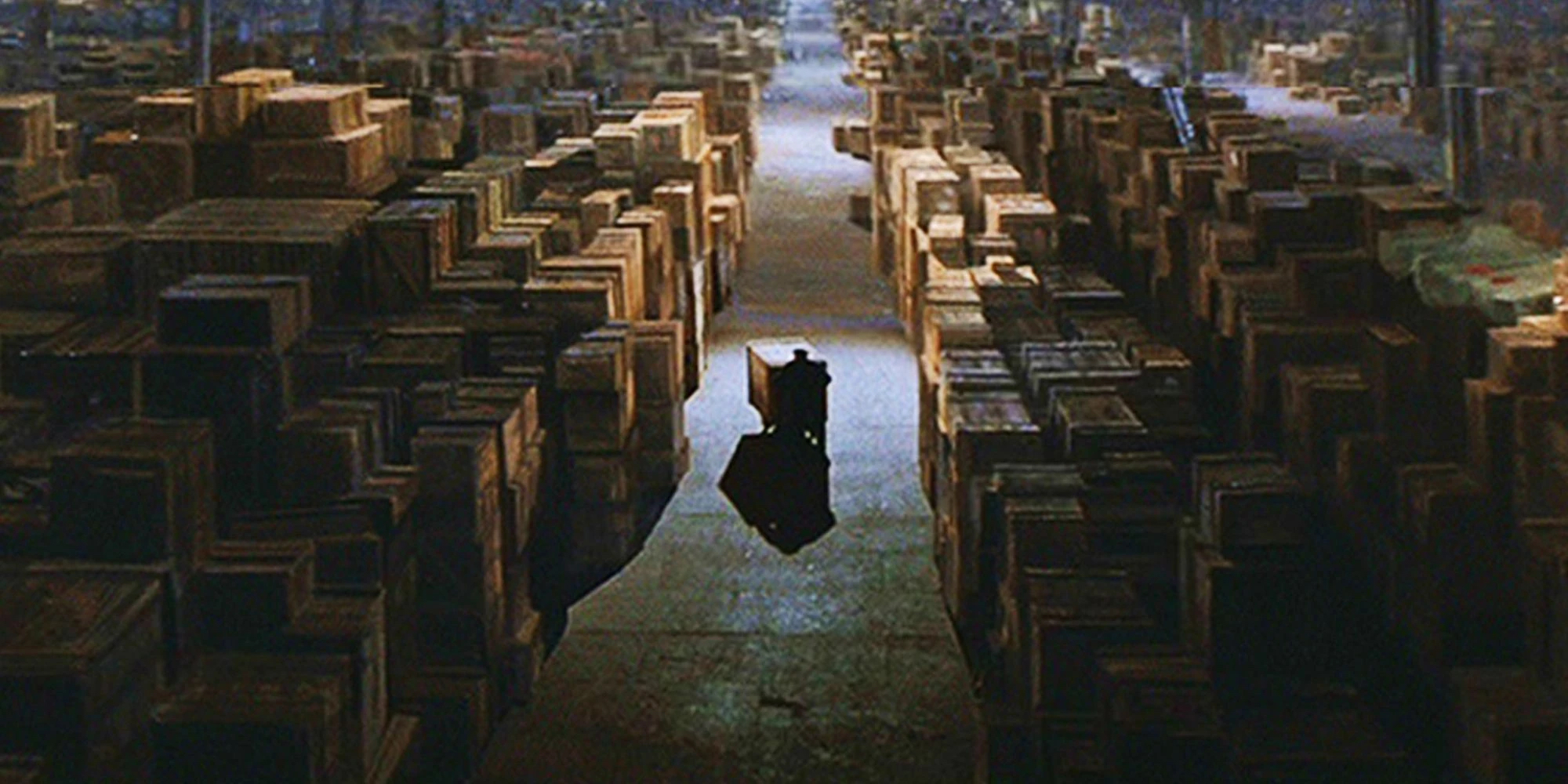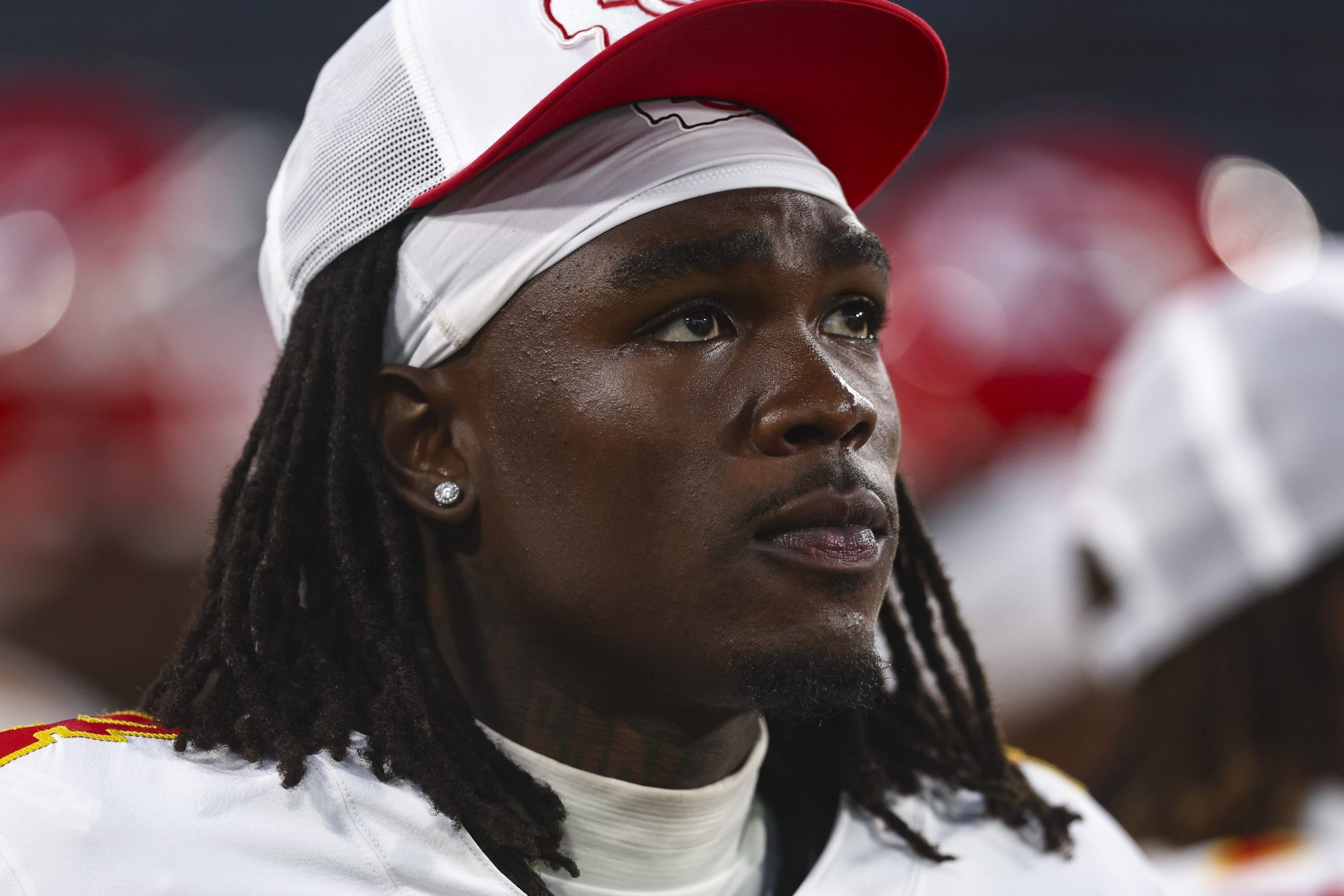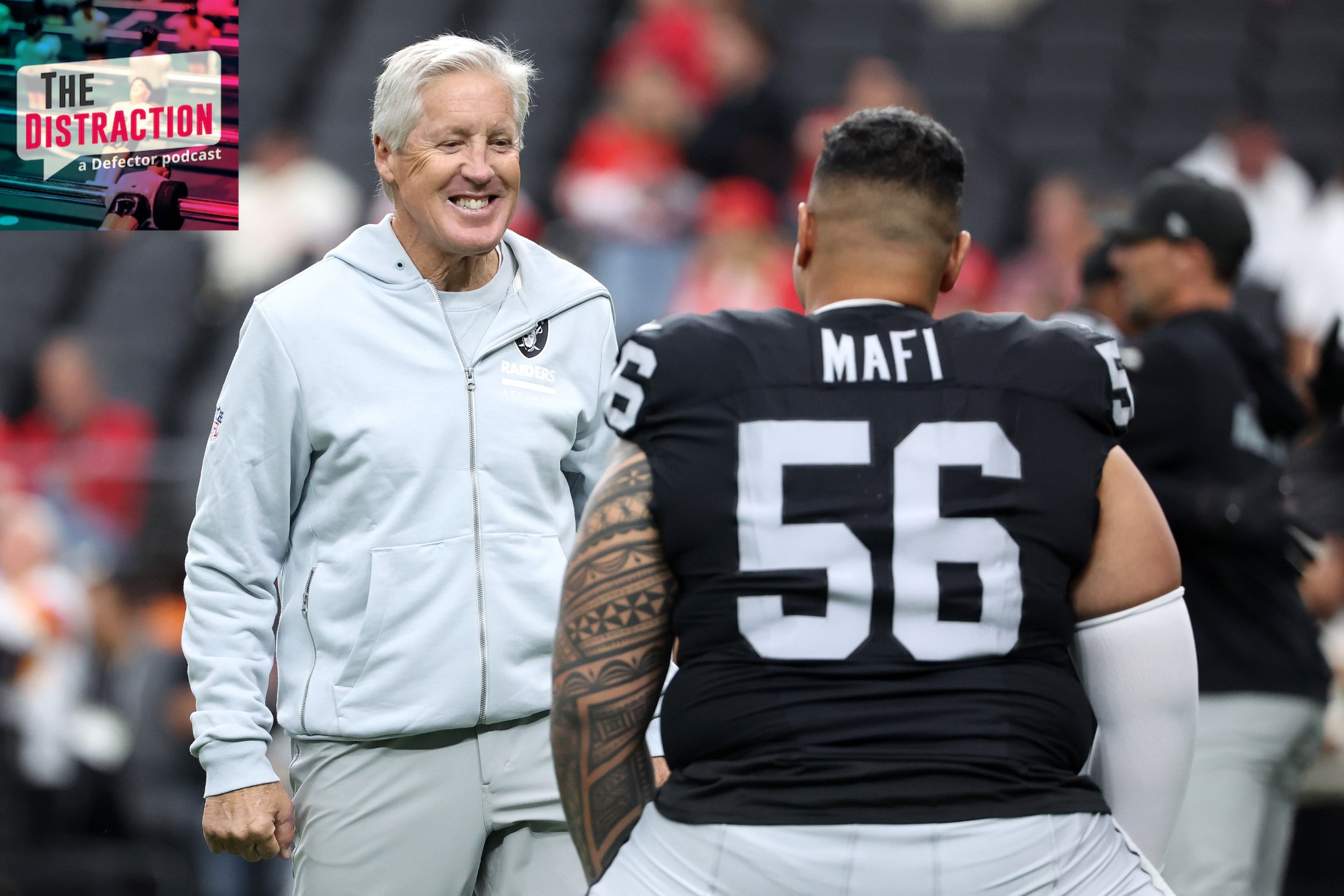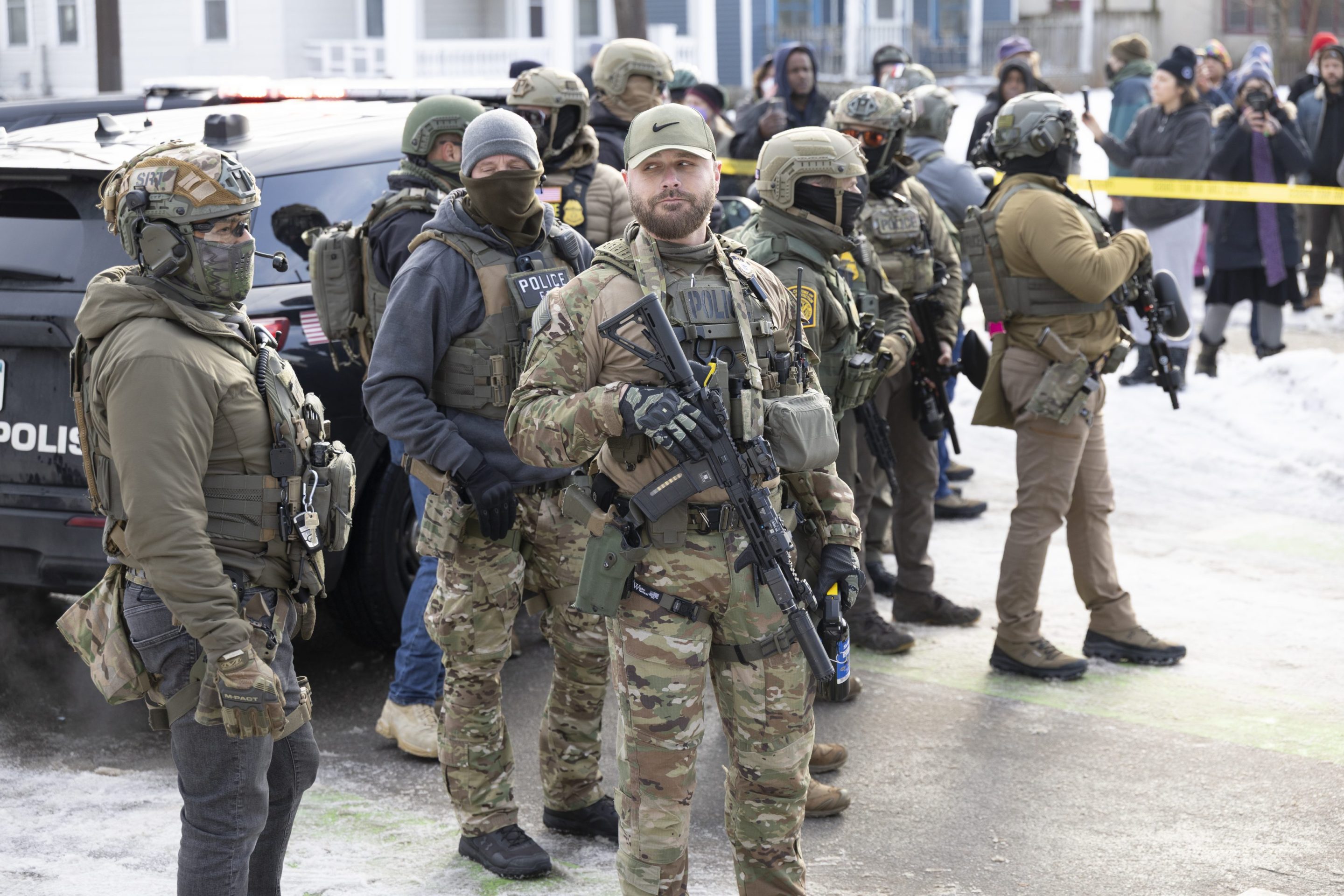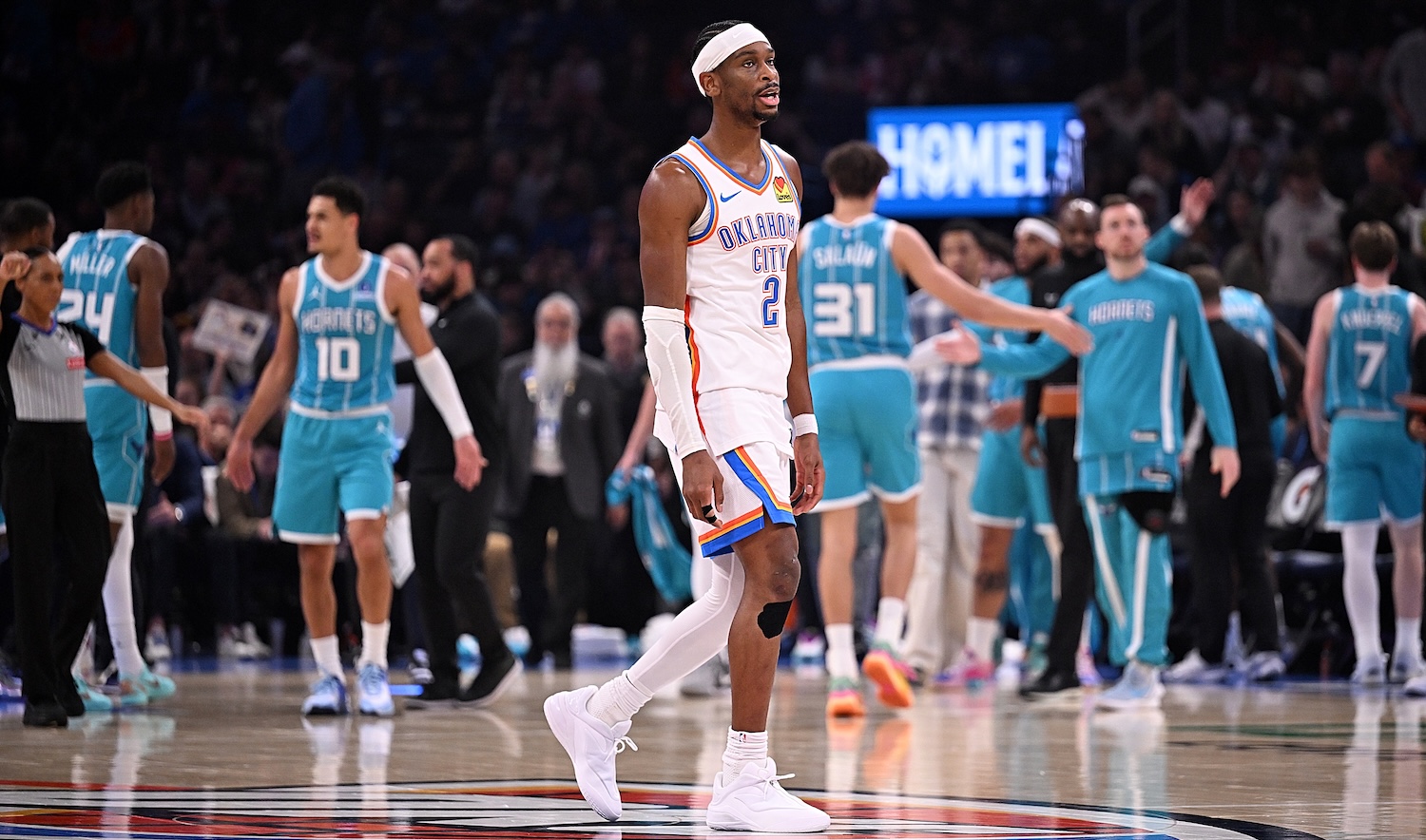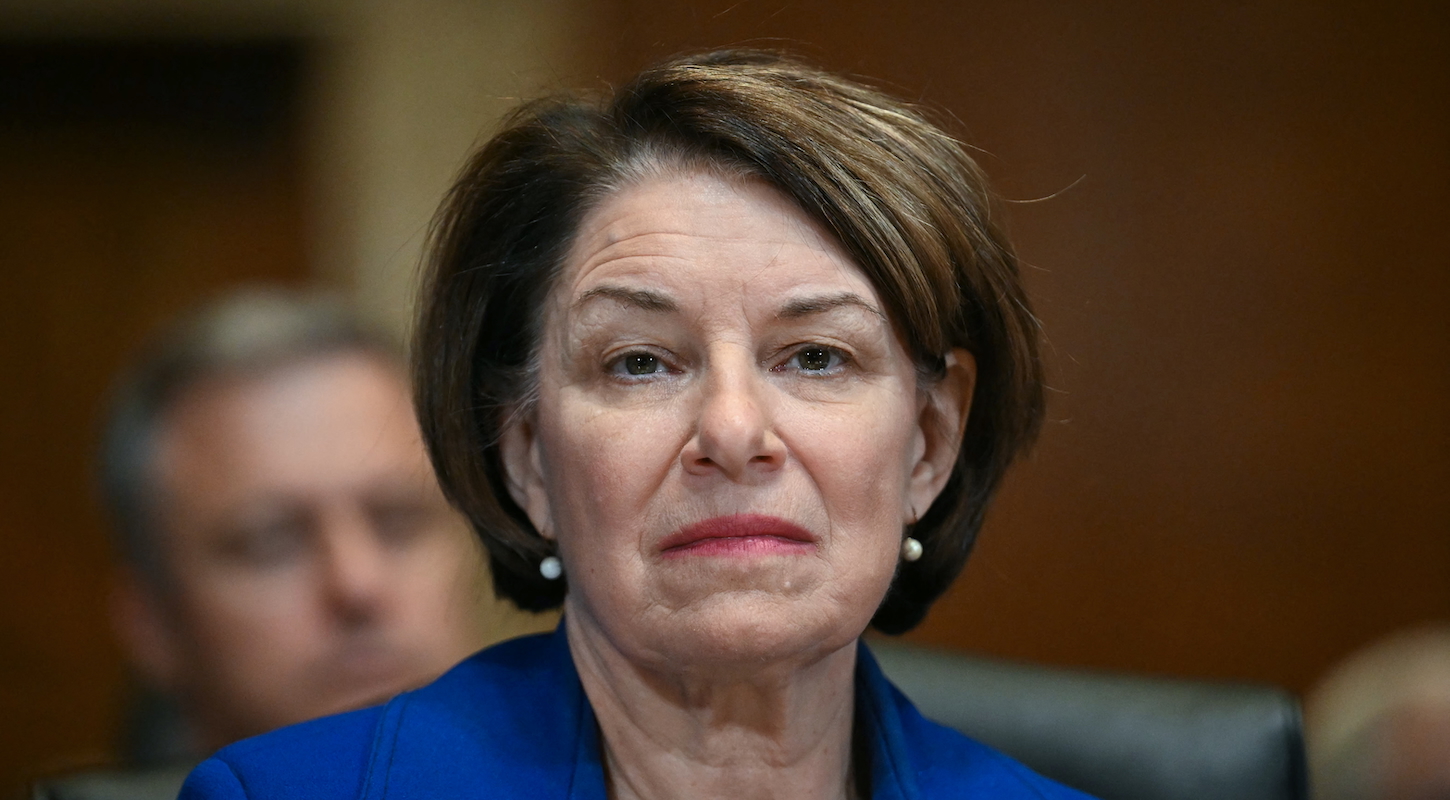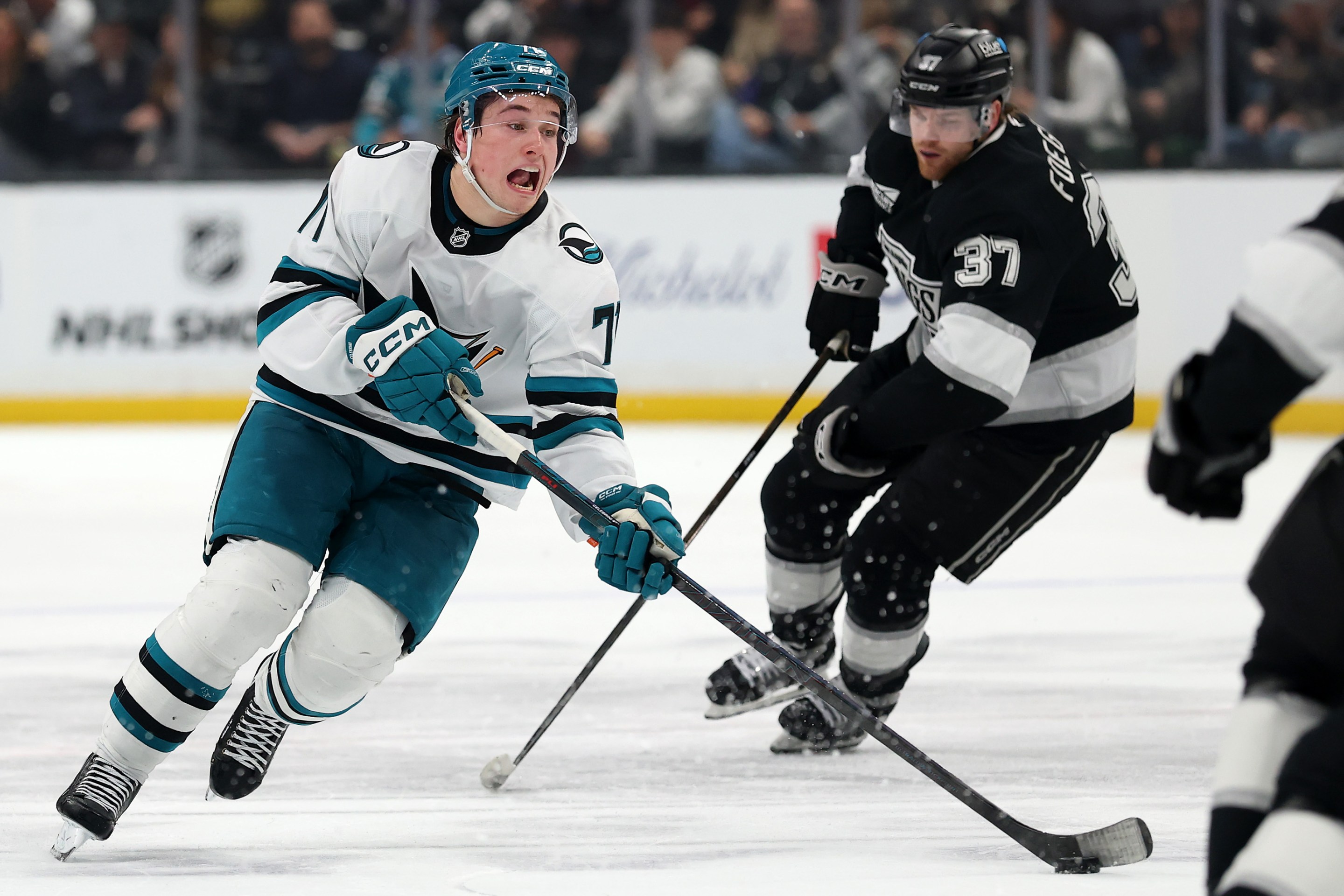Some of our old friends at Kotaku have launched Aftermath, a worker-owned, reader-supported news site covering video games, the internet, and the cultures that surround them. This article was originally published over there. Check them out, why don't you?
Artists do some of the most important work in video games, as it's artists who define the look of the worlds we inhabit and the characters we fall in love with. One of my greatest pleasures working around video games is getting to see that work, and one of the greatest injustices is the way we rarely get to see--and artists rarely get to show--that much of it.
We see some, of course. Publishers tease games with a piece or two of uncredited key art, they might release some wallpaper during development, then afterwards dump a gallery on Artstation and sell a hardcover art book and some prints. But there's so much more that goes into a game's development than the polished pieces we see after it's already done, and there are countless artists whose portfolios have giant holes in them because of the strict rules governing the crediting and ownership of the works they create.
While some of the commercial reasons for keeping game art under wraps make sense, many artists working in the video game industry say they're subject to a power imbalance, even in full-time studio positions, that sees the bulk of their work locked away in vaults, where not only can fans never see them but where artists can't share them either, not even in professional settings like job applications or portfolios.
It's a situation that calls into question what ideas like creation and ownership even mean in an industry like this, and is an intersection at the junction of "what is right?" and "well, this is how it's always been done" that, as a long-time concept/development art freak, has always fascinated me. In an effort to better understand this alleged imbalance, then, I spoke with a number of working video game artists, some at big AAA studios, others working the indie freelance beat (and many in between) to understand what's keeping their work locked away, and what they'd like to see changed in the future.
It's important to note here that these artists are all what you would broadly consider "concept artists". The folks painting landscapes and designing outfits and drawing weapon sketches. They're not animators or 3D artists or texture artists or lighting specialists, whose own challenges and issues in the modern workplace would require their own separate features.
Let's meet them! These aren't their real names, of course; given the NDA-breaking subject matter at hand I've protected their identities. Frank has worked for over 15 years across multiple console generations, AAA and indie. Heidi has primarily worked as a contractor for various indie games studios. Brian has AAA experience at some of the world's biggest publishers, and has done some Hollywood movie work as well. After working eight years in studios, Sally has since gone freelance, working on everything from mobile to indie to AAA. And Daisy is a AAA veteran who has since moved into independent development.
Luke Plunkett: What do the rules around sharing your artwork currently look like? How strict is the average NDA you're asked to sign in 2023?
Brian: Typically you are not allowed to share work until you’ve received permission from your boss at a studio. They are also not always on the same page about this. I have shared work that I was told was okay only to get an upset email from another higher-level employee that wasn't aware I got permission.
Most studio work I’ve done has NDAs that are effective in perpetuity. This is not typically something I agree to these days unless the company has a good track record of letting artists share their work eventually.
Frank: Working with a small indie team I have a lot of freedom. In the past at big studios, having started my career in the early 2000's, there was zero expectation I had any personal freedom to share my work outside of a folio once a title had shipped.
Over the years there was more of a pushback on that though, particularly as more opportunities to share emerged online and interest in the art tended to grow beyond those of us making it. Stuff like art dumps meant there was more of a desire for our art to be showcased on a personal level, but that was still only for shipped games, not cancelled ones.
Contracting I have found to be very studio-dependent, with smaller teams pretty willing to let you negotiate. Many smaller projects tend to be very open about development, from announcement onwards, so lots of work-in-progress stuff is encouraged as a form of promo.
Heidi: When I was in a studio it was pretty strict. Everything we made was under tight lock and key, and with my work as a 2D artist doing concept art, if we wanted to show anything it had to be approved first, and had to be done through official channels. The studio was often credited rather than myself. Game development is a team sport, so being credited as a team doesn't necessarily bother me, and when it's studio work there's an understanding that it's for the studio 'brand' rather than me the artist. But it is a strange situation, especially when the murky waters of 'who did what' start happening. I was credited explicitly only when it could be seen that me, as a very online developer and artists, could be publicly and positively associated with the project. This isn't the case for everyone or at all studios though.
No two NDA's I've signed are the same. I wish they were, it'd make my life SO MUCH EASIER. Some are TREMENDOUSLY strict, and others really do not care when and how you show the work. Some are very okay with me sharing whatever work whenever as a means of guerrilla marketing (I don't necessarily recommend this approach as you can find yourself in weird 'manage players expectations' territory). Others don't want me to share or acknowledge I've been working on a project until it is announced or has even been released, and even then I often have to check in with management to make sure it aligns with brand messaging. In most cases once the project is released I'm able to share approved or publicly-available pieces I've created on my website. The biggest common thread I can think of is that you can only show explicit work of stuff that made it into the finished game, there are exceptions to this of course, but generally, so you don't accidentally wake up to a million clickbait 'INSERT GAME HERE was going to have FEATURE I CONCEPTED AND LIKED HOW IT LOOKED SO I CHUCKED IT ON MY WEBSITE' articles. I also find that there is an unspoken (and sometimes spoken) rule of 'ask before you post stuff'. Additionally, marketing sometimes has a plan for certain pieces and you don't want to disrupt stuff like that.
Daisy: Being an employee at a game studio - contract fulltime, freelance or fulltime - means waiting until the studio gives the greenlight at an unspecified time, usually a few to several months, after the release of a game. Sometimes this waiting period revolves around artblasts on Artstation, artbook releases and other PR-related things on social media. With film and animation, waiting around for the studio greenlight could take several years and they are far more judicious with people who break NDA (if they are caught). The general point of this level of scrutiny is to prevent leaks.
Being a contractor depends if the job is onsite or remote. NDAs are still generally pretty strict on both. Updating public-facing portfolios with project materials even after a product has been made public knowledge is still implicitly a no without studio approval, this information is often done through department heads or relayed through an outsource manager or agency contact. Not all contracts are made equal, some last around a month or three while others are renewed yearly. Because remote freelancers in particular are always in a state of feast or famine, some prefer to upload NDA materials on their portfolio through a password-protected page, or have private pdfs, or have said materials ready only during interviews so long as they're not being recorded.
LP: How much work have you been able to share publicly over the course of your career?
Brian: In the last five years I’d say I’ve only been allowed to show maybe 5% of my professional output. I have had an unfortunate string of projects get cancelled and the work just gets locked away forever after that.
Frank: Over my career I have worked on 12 projects but shipped only four titles and two pieces of DLC.
Those cancelled projects tend to not get as far in development, so not as much final art, but there at least tend to be art bibles and vertical slice examples at a minimum. Some get pretty far along though.
Only one cancelled project have I been able to publicly show, and that was because it was developed internally at a big studio, but based on our creative director's personal pitch and development was agreed only on the condition that if it didn't continue development the IP was still owned by the creative director, so he granted us permission.
Heidi: Every weekday, 9-5 I am drawing for games, so naturally loads of art ends up on the cutting floor. There's also the pre-production stuff you do where you're figuring out ideas that will never make it into games. For every piece of art I've made for games, there's at least six or more thumbnails (or four or more dirty nasty sketches) I've done just to figure things out. I also try and write documents for stuff so that clients have a paper-trail for my work process with their in-house art teams (or if it's just me, it's for me so I don't lose my marbles trying to remember why I spent two hours researching something). Games are also just funny beasts when they're in development, I've concepted out whole features only for them to be scratched, sometimes a library of icons you've built is no longer relevant because a feature iterates, things are constantly changing, and sometimes the nature of the beast means that we kill the darlings.
I will also take this question to clear up a big bugbear of mine (sorry it's soapbox time): most concept art never leaves the studio. It's used to communicate ideas and well, concepts, to other team members and stakeholders. Because of it's very nature this means that it's often not the sexiest looking thing and is done in a small amount of time. Concept art is VERY RARELY that big beautiful gorgeous splash art we trot out for marketing purposes. I really wish as an industry we would learn to manage expectations there, because it's damaging junior artists. Because that stunning splash art marketing departments call 'concept art' is often art that's done after tons of concept art work and is created as key art, or it is art that has been created for marketing purposes. This isn't to say that actual concept art isn't stunning and incredible to look at, it just means that my producer is probably gonna be really mad at me if I take 3 weeks to paint key art to communicate one idea to the rest of the team, rather than work efficiently in the time we have to communicate several ideas.
TLDR: Most things get left on the cutting floor, I'd say about 65-75% depending on the project and what stage of development we are in.
Sally: With the exception of work I lost due to a hard drive failure on my end, my studio work is all public at this point. I’ve been a freelancer since the end of 2018 and that contains a lot more locked away NDA stuff, mostly due to the projects I was contracted on being pitches which aren’t necessarily projects which make it to full development or funding. Overall I’ve been weirdly lucky, I’ve had a game I’ve worked on release for almost every year of my career and the amount stuck behind NDA is not much more than a couple of year's worth of work – but a couple of years when I already have the skills and experience for that not to be too much of a sting.
Daisy: Over 90% of the studio work I've made over my career is locked away forever, through studio closures, liquidating assets after acquisitions, extremely nosy IT guys who don't like people using USB ports, and just really binding NDA clauses. This is why personal work tends to show up more in some portfolios and public-facing artist profiles.
LP: There seem to be lots of written (and unwritten) rules around when and how much work an artist can share from a project they worked on. Is there, like, a statute of limitations regarding this stuff? A point where you just think, you know what, fuck it, I'll just post this art and see if I get asked to take it down or not?
Brian: God I wish. This is not a typical thing to ever get in a contract from a bigger client and those that do usually have to fight for it.
Frank: I have never had timeframes in a contract for this stuff. There tends to be a bit of an understanding that maybe a console generation later or if the project isn't being developed in another fashion or the original studio is dead, then risk of showing stuff is low if you were able to smuggle it out.
Heidi: Yes. I have mixed feelings about it. But I've had some contracts where the wait time is AGES but others where it's 'mate, just wait until it's out and then let us know when you're posting'. This is for many reasons, one that I hear a lot from non-artist people (CEO's, lawyers, marketing, etc.) is that 'if we post too early it could have people steal our IP'. For some studios, the reason relates to marketing, and for others that use contractors to supplement in-house teams, it's about letting that art team having their moment in the sun first. Some only ever let you show work if it's behind a password-protected part of your portfolio, and others NEVER consent to contractors showing stuff.
Sally: I’ve not seen anything on paper that stood out – I tend to just wait until the game has released and then ask if it’s OK to post things. If the game has been out for three years I’ll just…post things anyways to be honest, I’m not a big name artist so me dropping some development concepts for a project onto my personal portfolio website isn’t going to make the front page of Kotaku, but I know larger artists don’t have that freedom.
Daisy: There is never an official statue of limitations because the implicit expectation is a studio will own the work you make forever. One particularly hostile contract stated they would own my work in perpetuity for the rest of my life, or my children's lives. Not sure if that one will hold up in court.
LP: How do you personally feel about all this? The restrictions, the vaults, the contracts?
Frank: I started this job expecting it was all a secret sealed vault, I guess I expected fewer cancellations though.
I understand certain aspects of secrecy as it can be important for the marketing process and wider businesses of a studio but I would like clearer request options or ways for studios to kind of let ex-employees know they can show stuff, though that doesn't help much if you don't have access to the media.
It also is harder for some departments, concept can just grab stills but props, animation, etc need to take time out to do renders or specifically showcase their work, which often you just don't get a chance to do.
Heidi: I accept it as part of the job. When i crack open a cold one with the boys* (*I sit at my desk and open Affinity and Procreate before listening to history podcasts while I draw), I'm no longer 'Heidi the artist', but instead I'm 'Heidi the artist who is creating work for X'. I have been hired for my talent, skills, and taste and how I apply that to this client or studio's IP, NOT so I can draw what I want for me. This is the trade-off you make being a professional artist, you're collaborating and making visual loveliness for others, not necessarily yourself. You're contributing to a commercial project, not creating your own art.
Because of this attitude, I accept from the get-go that a bunch of my stuff will never leave the workplace. What I do take issue with is that studios often like to try and restrict what artists can show after the project is done and the artist leaves a studio. All artists should be able to show work from a project once it's released as part of a folio and resume. Not letting an artist do so hinders their employment opportunities and disrespects their time on a project. When you give years or months to a project, it can be a real sucker punch when all of a sudden people tell you that you must never share that you worked on the project and never share your work. Be nice to your artists. Let them share stuff after a period of time so they can get more work and you get more publicity, it's a win-win.
Sally: I find it slightly frustrating that I can’t show some of my pitch concept work, as it represents work that I don’t have time to replicate in my own time. But I’m not bitter about it, it is how it is.
Ultimately I’m here to work on cool projects with a team not like...be a rockstar, so the idea of having people on social media not see a thing I made doesn’t bother me so much. The idea of potential future employers not see something I’ve made that might align with a project they’re hiring for is more of a sting, you can put things behind a password wall or whatever, but an art director browsing Artstation isn’t going to know to ask for that.
Daisy: This had and still does bother me, and it makes me wary about sharing my best ideas on a project. I accept it as part of my job, since clients don't always choose the more interesting ideas anyway, and it would be fantastic if artists as a whole were given far more leeway.
LP: What are your thoughts on the ownership of your work? You're getting paid to create things for a company, by a company, but also...you still created them.
Frank: Ownership of work produced at a studio is theirs, which for me has been fine and makes sense.
Some studios have extended that to anything you make during employment, but I think that is seen as a huge overreach now, so it's less common, or at least potential to negotiate out of a contract.
Even the big AAA studios tend to have declarations for personal projects or work that exists outside of your job that are yours, you just can't commercialize it during your employment.
At least in indie I see some audio folk retaining all rights though, and they're able to profit from those soundtracks, and frankly I would appreciate similar opportunities for visual artists to have potential future revenue through official print sales or merch, but it does get complicated when it may overlap with a studio's core business.
Heidi: Yes and no. As a freelancer I have to pop on my lawyer hat sometimes and read my contracts to make sure that nobody tries to be sneaky and own ALL THE WORK I produce during my time on a project. I've had some people try (intentionally and unintentionally), but usually once you point out that work that I'm doing in my spare time is unrelated to work, and cannot be owned by the company, they change things pretty quickly. Work that I do for clients and studios though belongs to them. I'm working on someone's IP, and even if I am helping them create that IP, it belongs to the company and not to me. It's the reality of how the sausage gets made, which is something that can frustrate artists. It comes back to that 'not creating for myself, but creating for a big team-wide project and IP' separation of church and state.
I would like to see parts of this change however, I'd love to see a residuals or royalties situation (that much more intelligent people than me can create) come into affect for artists who do, say, create a beloved IP staple character for a franchise. Ultimately at the end of the day, the artist has created one of the most marketable (if not THE most marketable) aspects of the character and should be compensated fairly for that work and the success it brought the studio. But I have no idea if this could actually happen (once again, smarter folks than I could probably tell you, I went to art school for a reason).
When working in a commercial video games setting, it can also be a nightmare to show people the really rough parts of the visual journey. Art Literacy is so garbage in the games industry, and nowhere is this more frustrating and apparent than when you're pitching to stakeholders, legal, etc. If you show the messy development work (eg. the post-it's i've scrawled nonsense on, initial sketches, thumbnails, etc.) it can lead to bogged-down discussions and unhelpful feedback, because we don't teach folks how to look at and appreciate art and develop those literacy skills. It can also be really difficult to manage expectations of people with low art literacy who don't value diverse art styles. If I show someone something that looks rough and explain where it's going, they can draw an incorrect conclusion. You can be the best communicator in the room and this can still happen if the other party doesn't grasp the visualization AND doesn't have strong art literacy skills.
Because of those two factors it does mean that things like my aforementioned nasty post-its, sketchbooks, writings, sketches, and other stuff, doesn't get released. You have to break through the hurdle of 'this is disposable and ugly' and corporate overlords giving you approval to share, and that tends to mean that it doesn't get shared to the public.
This is also before I even touch the idea of 'sharing rough art from a cut feature'. That doesn't get shared in my experience because the headache of dealing with 200 Twitter or Reddit commentators saying that 'GAME WAS GONNA HAVE THIS AND IT GOT CUT!!', and then blaming anything and everything, when in reality it was because we just didn't have time or it didn't work with the project the way we thought, is incredibly draining.
Brian: The general terms for artists from bigger clients grant all rights to them. I think it's brazenly immoral to revoke portfolio usage rights from the artist for all time. Like yeah you can own the pictures, man, but you shouldn't be allowed to keep us from using our labor to secure future jobs.
Daisy: Artists in videogames, film or animation have no rights to the work we make for clients or studios. Unless we have a more friendly contract and/or specific details are negotiated before the work begins, and that might count against some artists being hired again for new projects because they are perceived as being "difficult". With clients this depends on our professional relationship being amiable enough to navigate some leniencies. Our agency is often stripped from us in the name of realizing someone else's vision, to be diplomatic. The studio or the client still have the power to do whatever they want to the work after the fact and sometimes they make some unfortunate, undesirable choices. It's one thing if it's just one project, but over time it gets seriously depressing.
LP: OK, we've talked about how things are, but how would you like things to be? In a hypothetically perfect world for games artists, what would control and crediting and ownership over the things you've created look like?
Frank: In the ideal world I would still understand, and want control over the work-in-progress pieces released on a game. Thinking of it as a creative director or lead, we all have suffered one time or another with the very first in-progress screenshot being used in articles to promote the game five years later, and you certainly want to clear early art.
Later in production, or for shipped titles, having at least public folios of the work should be standard. It does get complicated if projects are still being developed though, and you could negatively impact the project for those remaining on a team. Though I will also say I have seen plenty of NDA-breaking work in folios as people tend to take the risk on stuff they deem safe.
Definitely my biggest regrets about old art on projects was just not capturing or taking as much of my work during development, with my focus being on shipping the game. It has been funny recently hearing lots of stories of publishers reaching out to devs hoping they 'stole' development work for use in HD remasters when the publisher lost all of the original development data.
Brian: I am staunchly in favor of NDA term limits for work done. There is no world where it feels just to legally restrict artists from showing their work five years removed from doing it. If your project still isn't done in five years, that is a failure of management, not the artists.
I think all artists on a project should be allowed to show work done on the project two weeks after release. Should a project get cancelled publicly, artists should be allowed to post art done for the project immediately following that announcement. If it gets cancelled privately, artists should be allowed to show that work no later than one year after cancellation. In a perfect world at least. Rules like this would force corporations to be much more careful in their project development. They often don’t want cancelled artwork out there because of the idea that they may use it down the line, but they never do.
Sally: Just between us, I just show things anyways; ask forgiveness, not permission. I know I'm not the only one who does that, I was encouraged to do it by other artists.
I don't have a moral problem not showing things from projects from smaller indues, there's an urge not to screw the little guy over, you know? But if I worked on a big IP, and publishers can be weird about that, I'm putting the work in my portfolio anyways and being vague about where it's from if I have to.
Cancelled projects I think should be fair game, we should be able to show that. Another factor going on here is that as a concept artist my work is literally made to be disposable, you make a lot of options and the ones that don't make it get thrown in the bin, it's just part of the process. I would perhaps feel differently about a polished asset I spent three months on never seeing the light of day.
I'm not sure what rules I'd want in an ideal world, because I find that it depends on the client and the project. I can't yet show any work from the project I'm currently on, that I've been on for two years, but I also wouldn't WANT to, not until the project is done. It kinda makes you feel like a secret agent when the project is huge, and even if it means I've not been able to show any of the work for two years, I wouldn't want to spoil the surprise.
Daisy: I think ideally every artist deserves credit on what they've contributed to the project, and should never be denied being able to show off what they've made after a few months - or eight - of a product's launch. I even think they should be allowed to sell 2D renders of their work within a limited amount and profit ceiling. The recession is rough out here, and laying off people in the cold with no way to market themselves and their talent is horrible.
With acquisitions, if and when things fall like with Embracer, people who've worked on materials and technology to support projects should get them back hassle-free so when they do try to start over, they're not doing it from scratch. I hope companies are far more vigilant about protecting their IP from exploitative technologies like generative AI, and their employees as well. And one final thing, I wish companies were far better at organizing and archiving their projects, because it seriously sucks to see gigs and terabytes worth of work go down the drain because no one bothered with proper backups and decent storage.
If you liked this story, you'll find more good blogs at Aftermath. I hope you'll consider subscribing.
